Other records included Pepai Jangala Carroll ($US127,000) and Angelina Pwerle ($US120,650).
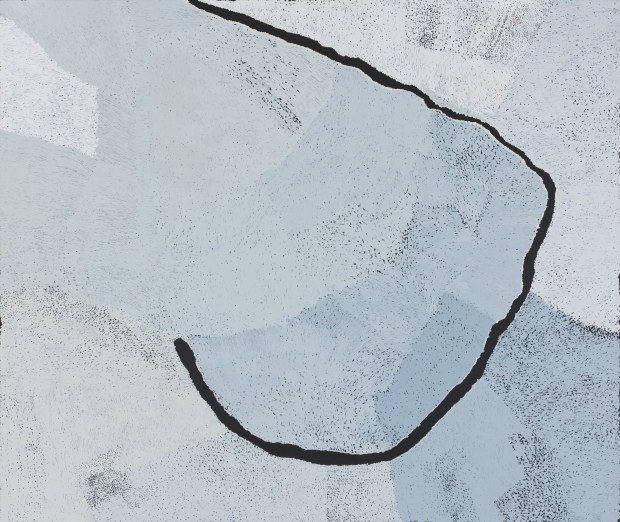
Pepai Jangala Carrolls’s 2019 painting, Walungurru, was estimated at $US40,000 – $US60,000 but sold for $US127,000 (including premium) at Sotheby’s in New York.
Klingender does not expect he’s seen the last of the European collector who has now nailed his or her colours to the mast.
“I think it will be an ongoing thing for them to add contemporary Indigenous art into their very impressive international collection of contemporary artists,” Klingender said.
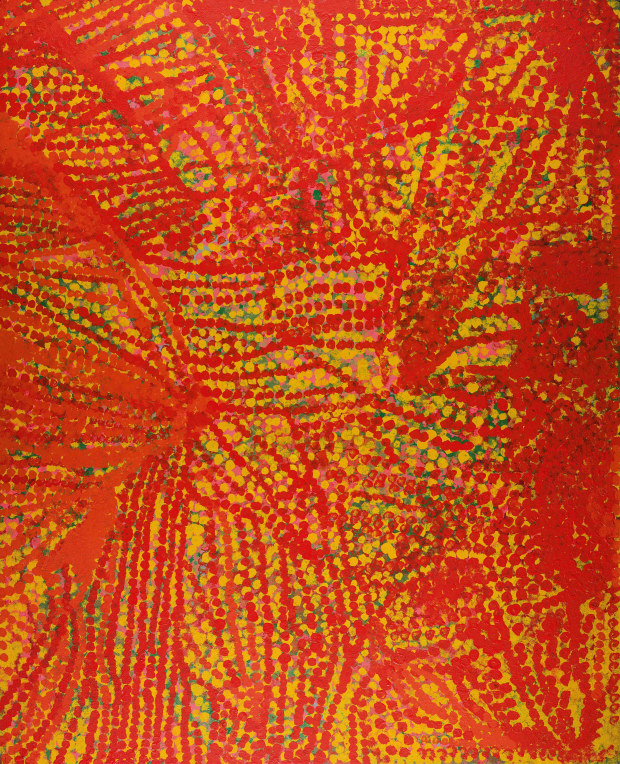
Emily Kngwarreye’s Fertile Desert, 1992, fetched $US444,500 (including premium) at Sotheby’s, trouncing the estimate of $US150,000 – $US250,000. Fertile Desert was acquired by a European collector with a private museum.
Sotheby’s began its international sales of Aboriginal Art in 2015 in London, moving the sales to New York in 2018. Since then, the sale has been annual, except for in 2021 because of COVID. The one-hour, 67-lot auction was held at 6am AEST on Wednesday.
It saw 13 individual artist auction records set, including a new record for the late Sally Mirdidingkingathi Juwarnda Gabori, whose imposing canvas Big River at Thundi sold for $US190,500. In Australian dollars, this bested Gabori’s previous record of $251,591 for Ninjilki, set in March this year by Deutscher and Hackett.
The $US101,600 achieved for George Tjungurrayi’s Western Desert dot painting, Numinya, was a record. Records were also set for works by Angelina Pwerle, Joseph Jurra Tjapaltjarri, Dinny Nolan Tjampitjinpa, Weaver Jack, Eugene Nampitjin, Mulyatinki Marney, Beyula Napanangka Puntungka, Pepai Jangala Carroll and Richard Bell.

Sally Mirdidingkingathi Juwarnda Gabori’s Big River at Thundi, 2008, measuring 197cm by 304cm, set a new record for the artist.
A cheerfully self-confessed renegade and agitator, Richard Bell is on the up and up, Klingender said.
“He’s certainly making a huge impact internationally,” Klingender said.
Bell’s signature art installation, Embassy, is currently located at Tate Modern in London where audiences can hear Bell and other black activist panellists speak.
“Art is the strongest weapon that we have; maybe the only weapon that we have,” Bell told his audience last Saturday. (The talks are live streamed.)

Artist Richard Bell outside the Tate Modern gallery in London this month. Andy Hall
The work of Bell’s that Sotheby’s sold is a painting called Aesthetic Equal Rights, 2018. If you half-close your eyes, you can make out the words “I see you as my equal”. The painting sold for $US88,900.
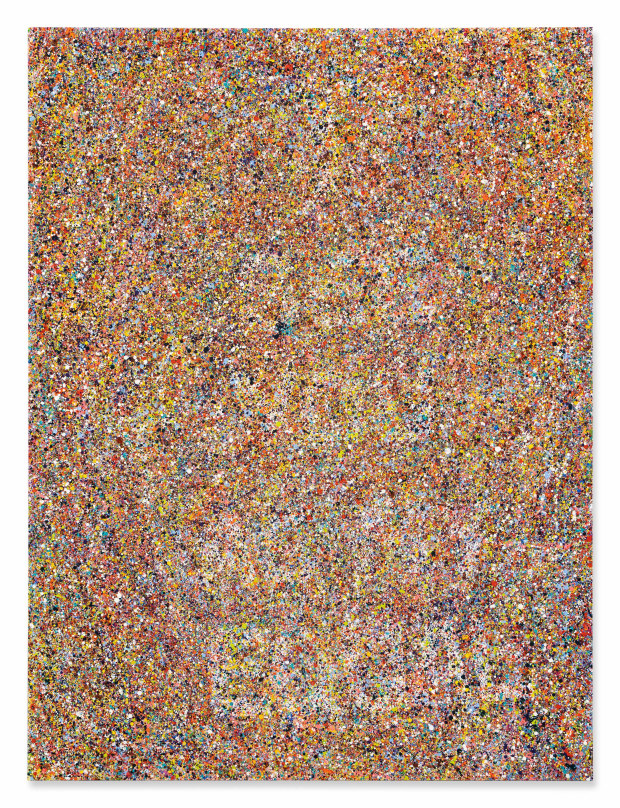
Brisbane-based contemporary artist Richard Bell’s 2018 painting, Aesthetic Equal Rights, set a new auction high for the artist at $US88,900 on an estimate of $US70,000 to $US100,000.
With the top 10 prices all exceeding $US100,000, Klingender was happy with the sale. But he was disappointed that 10 bark paintings did not perform well. Many were passed in.
“We did expect the barks would struggle because there were just so many similar ones,” Klingender said.
Additionally, Klingender said too many somewhat similar barks were consigned to the one sale, because this was the wish of the consignor, an English private museum.
“It seems to me from the history of these sales in New York that the best paintings and the contemporary paintings – and the ones that are aesthetically beautiful as well – do extremely well.”
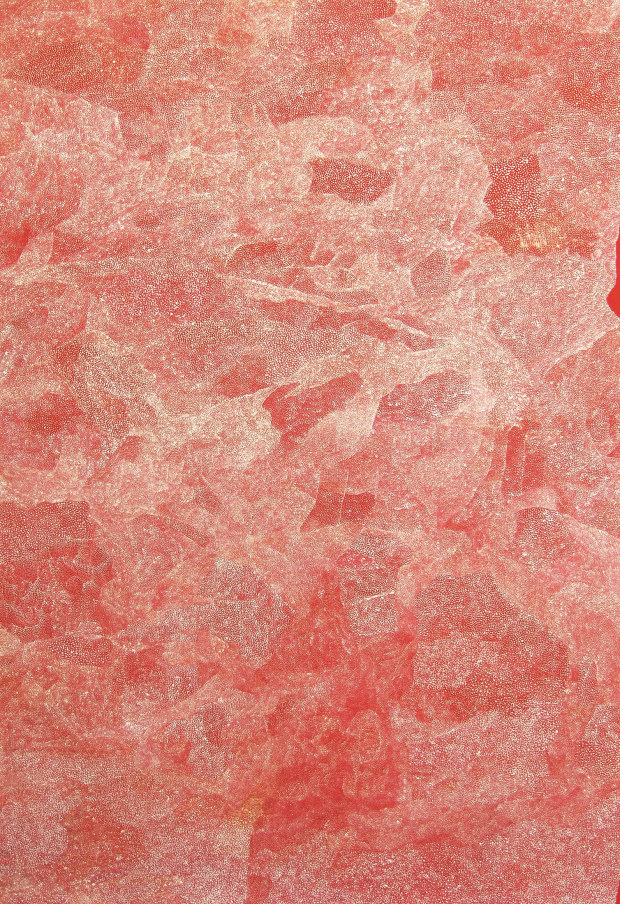
Angelina Pwerle’s Bush Plum Country, 2003, estimated at just $US20,000 – $US30,000, fetched a spectacular $US120,650 on the hammer at Sotheby’s in New York.
Klingender said one of the sale’s surprises was the $US182,000 achieved by Angelina Pwerle’s Bush Plum Country, 2003. The estimate was just $US20,000 to $US30,000.
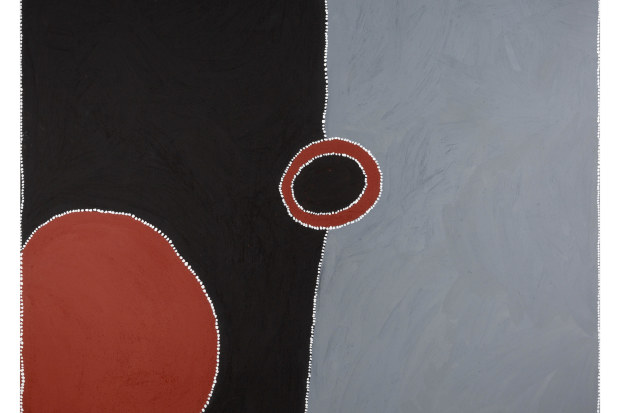
Paddy Bedford’s painting, Mud Springs – Yuwangeny, 2002, was a surprise “pass” at Sotheby’s.
“We had a lot of people admiring the painting and it was a really exceptional early example,” Klingender said.
“She’s become more and more popular.”
It has long been said that international markets value the best Indigenous art more highly than do Australian markets. Klingender said the prices achieved in New York continued to show that “the top things over here are definitely on a different level than what happens at sales in Australia”.
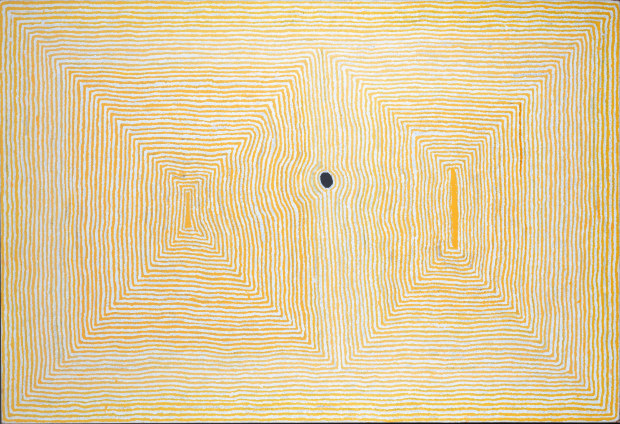
Wati Kutjarra, 2000, by Tjumpo Tjapanangka, was one of the five pictures heading to a private European museum of contemporary art, selling for $US92, 250 on an estimate of $US70,000 – $US100,000.
“It’s a world market [in New York] and the buyers as usual were from really diverse places – east and west coast of America and from Europe and England. Less from Asia this time. But it was still a really broad cross-section.”
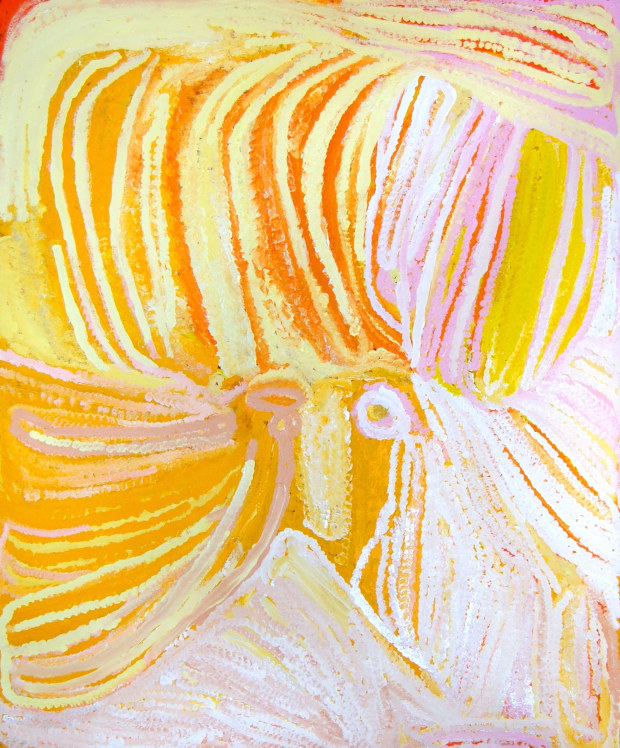
Eubena Nampitjin’s exuberant painting, Midjul, 2008, set a new auction record for the artist at $US63,500 (including premium).
Not only did none of the top 10 lots go to an Australian buyer, no Australian public gallery or museum bid at the auction.
“They have the money I think, but it takes time and they have to get organised,” Klingender said.
As for Hollywood actor and keen Indigenous art collector Steve Martin, he rode his bicycle to the preview and was “very, very complementary” about the works, Klingender said.
Martin was the under-bidder on a couple of lots, and may have even bought one. It’s too soon after the sale to be sure, Klingender said.
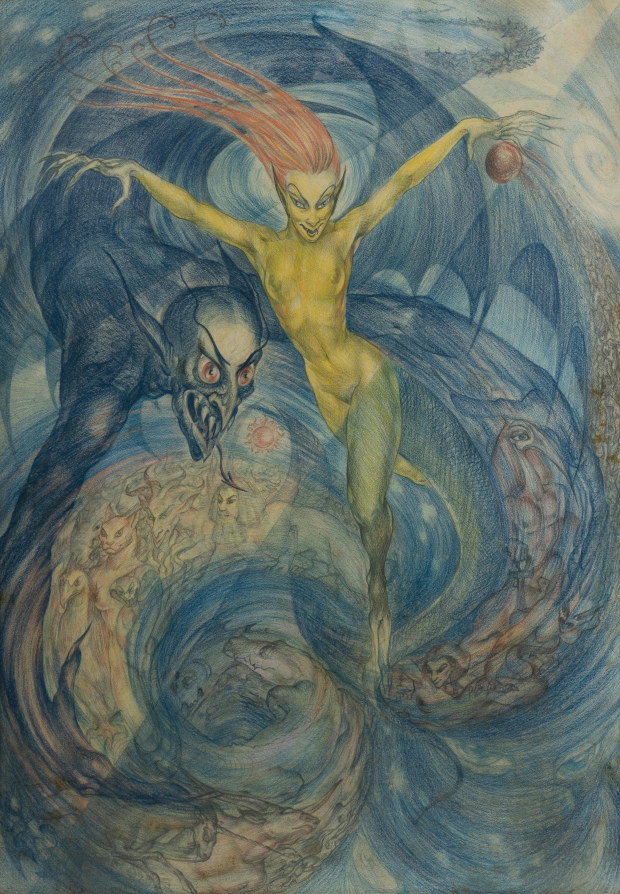
Rosaleen Norton’s Witch’s Vortex, in coloured pencils, was estimated at $2000 to $4000 but brought $14,640 (including buyer’s premium).
Australian gallery owner D’Lan Davidson advises Martin and bids at auction for him. Davidson has just opened a new Indigenous art gallery in the heart of Manhattan, New York.
Back on home soil, Rosaleen Norton (1917-1979) was notorious in her day as the “witch of Kings Cross” who practised trance magic and sex magic. Sydney Symphony Orchestra conductor Sir Eugene Goossens was part of Norton’s circle of devotees, a liaison that ultimately contributed to the sad end of his illustrious career.
Norton was an artist, and when four of her works recently came to light in Davidson Auctions in Sydney they fetched excellent prices. One of them, Witch’s Vortex, in coloured pencils, measuring 77.5 cm x 55 cm, was estimated at $2000 to $4000 but brought $14,640 (including buyer’s premium) in Davidson’s sale on May 20, 2023.
All four of Norton’s works were given by Norton to Augusta Macdougall, proprietor of the bohemian Pakie’s Club in Elizabeth Street, Sydney. They were consigned to auction by the estate of the late Deidre Macdougall who had inherited them.
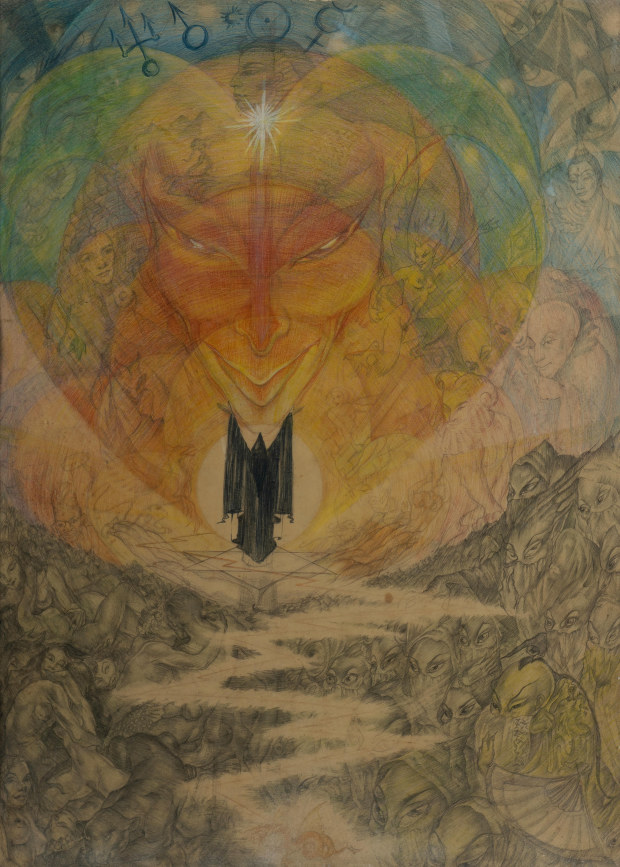
Rosaleen Norton’s The Dream, in coloured pencils, was estimated at $1500-$3000, but sold for $14,640.
Robert Davidson of Davidson Auctions said Witch’s Vortex set a record for Norton. Her previous highest price was $4276, set in 2006 by Leonard Joel. Davidson said the drawings all had unquestioned provenance and were fresh to the market.
“They are just superb examples and her work doesn’t [often] come up, and not that quality,” Davidson said.
Sonia Bible, who made a documentary film about Norton in 2020, said the artist remains deeply misunderstood. Bible said it was the newspapers who dubbed Norton the witch of Kings Cross, and Norton acted up to the sobriquet by allowing herself to be photographed in a pointy hat.
“There was so much hype and media attention around her,” Bible said.
Norton studied under the famous artist Rayner Hoff at the NAS.
Norton’s other drawings sold at Davidson Auctions were The Dream, ($14,640), and two untitled drawings hammered at $6000 and $6500.
